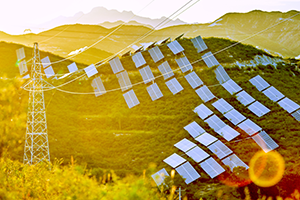As countries and companies are putting frameworks in place to fight climate change and protect the earth’s ecosystems, could AI play a role to achieve better sustainability and lessen the ecological footprint of industry?
At its core, the goal of an AI is to achieve a predefined objective that humans set, where the machines reasons from past examples through historical data and considers multiple dimensions, where humans reach their limit after 4 or 5 variables. Applied to the manufacturing industry, it means that past data from manufacturing processes could be interpreted by AI algorithms that take into account a huge set of features and factors to optimize processes or solve complex challenges. Typically, industrials try to increase the yield as a primary objective, but could we kill other birds with the same stone, such as energy consumption, gas emissions, scrap and waste?
With a precise objective in mind (e.g.: reduce CO2 emission by 5 %), and as far as we have enough data at our disposal for the algorithm to test hypothesis with artificial intelligence, it’s worth exploring. Contrary to traditional rule-based approach that require an overarching theory, AI works in the realm of probabilities, where a full comprehension of the problem isn’t required to achieve impactful performance gains, even in edge cases.
Aligning efficiency and sustainability with AI
Optimizing specific business issues such as yield, quality or reliability can also generate immediate positive consequences: “We’ve optimized the performance of production lines by stabilizing the processes, and this resulted in machines functioning longer and safely with less maintenance, while using less water and energy. We’ve also seen a stark decrease in stoppage in industries where the factory’s continuous production is crucial”, recalls José Andrés García, Lead Data Scientist at Wizata.
“Through collaboration with our client’s innovation teams, we define a balance between these objectives early on, with an AI that aims to minimize ecological side effects while maintaining the tonnage per hour that a production line has been designed for”, explains Jean-Philippe Hugo, CEO of Wizata.
Enhancing the yield of production lines while also perfecting the quality of the products, reducing the maintenance of machines, and reducing environmental impacts adds multiple dimension to the problem. “We’ve found that a collaboration with engineers that are experts in their fields and data scientists assisted by AI can help to pinpoint the correlation between these different sub-objectives and decide a clever final goal for the AI”, continues José Andrés García.
This is also true at the process level: deciding to optimize a single process is easier than optimizing a sequence of processes, especially if they’re as different as a blast furnace and a grinder, but, depending on the business case, a global, holistic approach might make more sense for long term success.


